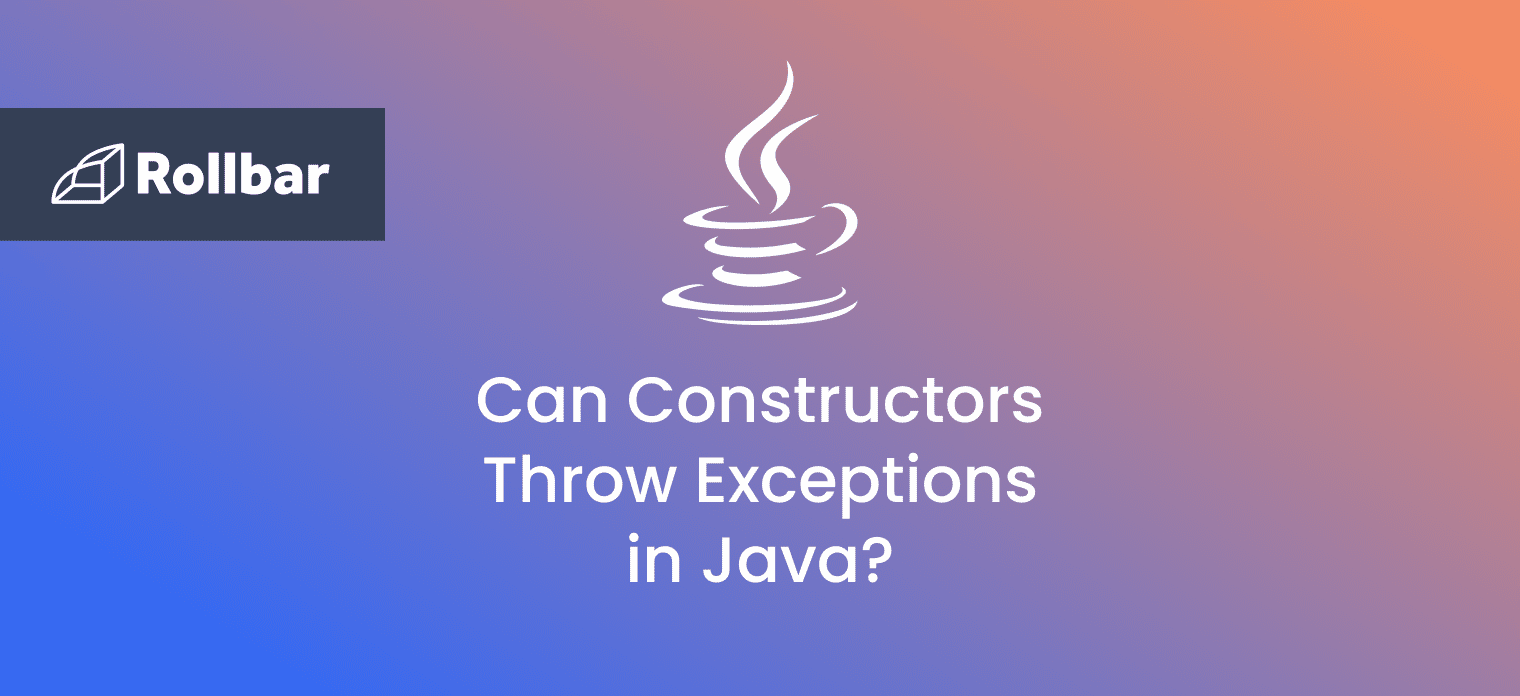A well-written Java constructor is a beautiful thing. Taking advantage of these special methods allows you to initialize an object with data when you instantiate it. Additionally, using constructors to their fullest can help you maintain clean, organized code. However, what happens if some of the data passed to the object through the constructor is invalid? Exception handling is the key.
The short answer to the question “can a constructor throw an exception in Java” is yes! Of course, properly implementing exceptions in your constructors is essential to getting the best results and optimizing your code. To do so, it is valuable to understand constructors, exceptions, how they work together and best practices for using both.
Java Constructors
A constructor is a special method used to instantiate an object. The following is an example of a very simple constructor being called to create an object:
ExClass newObject = new ExClass();The section “ExClass()” is the constructor method. This is what the constructor definition may look like in the class:
public class ExClass {
public ExClass () {}
}The above example would be unnecessary because Java automatically creates a no-argument constructor for all classes that don’t have other constructors. Typically, if you define a constructor in a class, it is so that you can pass data to the object through parameters. This is an example of that:
public class ExClass {
private int value = 0;
public ExClass(int valueInput){
value = valueInput;
}
}
When you instantiate this class, you would need to pass an integer value as a parameter of the constructor. This is what that would look like:
ExClass newObject = new
ExClass(10);
Throwing Java Exceptions
The next step in examining the question “can constructors throw exceptions in Java” is looking at exceptions. An exception occurs any time your code is disrupted and terminates abnormally. Obviously, this isn’t ideal. By writing code to throw and catch exceptions, you can handle them without causing the code to be disrupted. This is an example of throwing an exception in a method:
public string exMethod(int index) throws
IllegalArgumentException {
if (index <0 || index >= StringList.size()) {
throw new IllegalArgumentException(“Index not valid”);
}
return StringList.get(index);
}In this example, the method “exMethod” checks whether the index is valid or not. If it isn’t, the method throws an exception rather than trying to get a value from an invalid index. That exception can be caught by the code that calls “exMethod.” In this example, it would also be okay to catch the exception automatically thrown by “List.get().” However, in many cases, it is important to explicitly throw exceptions.
Can a Constructor Throw an Exception in Java?
As mentioned above, yes, exceptions can be thrown by constructors. They can be thrown automatically by Java if you try to pass invalid data into the constructor. They can also be explicitly thrown in your code if you want more customized exception handling. Here’s an example of an exception in a constructor in Java:public class Student {
private string name;
private int age;
public Student (string _name; int _age) throws IllegalArgumentException {
if (_age < 0) {
throw new IllegalArgumentException(“Age must be greater than zero”);
}
name = _name;
age = _age;
}
}
This can help to prevent the object from being instantiated if the data will not be valid. This can help to prevent bugs and bad data. Throwing exceptions is especially important in constructors because of how it affects instantiating the object.
Java Constructor Throw Exception Best Practices
How you throw and handle exceptions for constructors is very important for optimizing your software. The key issue is whether an object will be instantiated, partially constructed or discarded.
When an exception is thrown by a constructor, it will not be instantiated and is usually made available for immediate garbage collection (discarded). However, in some cases, it can be partially constructed and not immediately sent for garbage collection. This typically happens when the constructor accessed something before the exception was thrown. For example, it may have accessed a collection or acquired an unmanaged resource.
The best practice for handling this is to ensure that all accessed resources are properly released when the exception is thrown. A simple solution is to check data and throw exceptions before doing anything else in the constructor. If this is not possible, care should be taken to ensure that all the resources are released.
If other exceptions can happen in the constructor, it is best to release the resources either explicitly using try-catch-finally blocks or implicitly using try-with-resources. Otherwise, the partially constructed object could be a security vulnerability and a waste of system resources.
Java Constructor Throw Exception Example
The following is another example of a constructor throwing an error including the class and a call to the constructor. First, the class that will be instantiated:
public class Student {
public string Name = null;
public int Grade = 0;
public Student(string name, int grade) throws IllegalArgumentException {
if(name == null || name.trim().isEmpty()) {
throw new IllegalArgumentException(“Name is invalid”);
}
if(grade <= 0 || grade >12) {
throw new IllegalArgumentException(“Grade is invalid”);
}
Name = name;
Grade = grade;
}
}This constructor checks both the name and grade to make sure they are valid. This is what calling the constructor would look like:
public class Main {
private List studentList = new ArrayList();
public void RegisterNewStudent(string name, int grade) {
try {
Student s = new Student(name, grade);
studentList.add(s);
}
catch (IllegalArgumentException iaex) {
System.out.println("Student data not valid");
}
}
}
Track, Analyze and Manage Errors With Rollbar

Managing errors and exceptions in your code is challenging. It can make deploying production code an unnerving experience. Being able to track, analyze, and manage errors in real-time can help you to proceed with more confidence. Rollbar automates error monitoring and triaging, making fixing errors easier than ever. Try it today.





